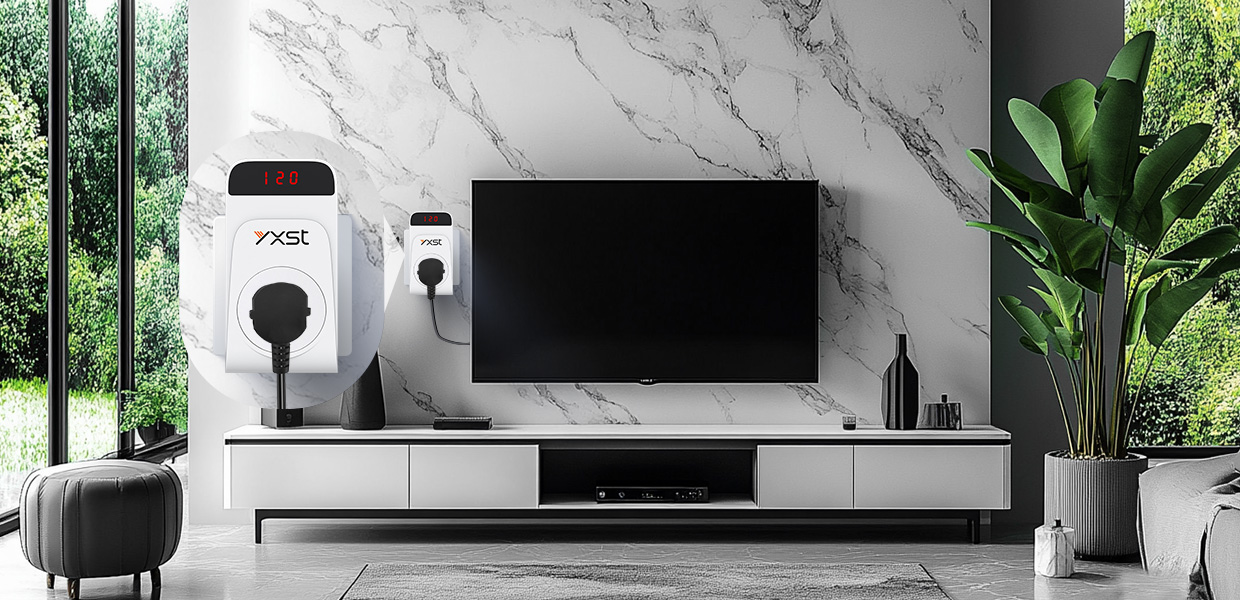How to Choose the Best Voltage Protector for LED TV:Comprehensive Guide
Date:2025-03-03 Click:790
Introduction
LED TVs are high-value investments that require protection against voltage fluctuations, surges, and transient overvoltages caused by lightning, grid instability, or electrical faults. Selecting the right voltage protector ensures longevity and safe operation. This guide combines technical insights and practical advice to help you make an informed decision.
1. Understanding Voltage Protector Types
Voltage protectors vary based on their design and application. For LED TVs, the following types are relevant:a. Surge Protective Devices (SPDs)
- Function: Divert transient surges (e.g., lightning strikes) to the ground, preventing damage to connected devices.- Types:
- Type 1 SPD: Installed at the main electrical panel for high-energy surges.
- Type 2 SPD: Used in subpanels for moderate protection.
- Type 3 SPD: Point-of-use devices (e.g., Socket Type) for sensitive electronics like TVs
- Key Features: Voltage protection level (Up), response time, and discharge capacity.
b. Over/Under Voltage Protectors
- Function: Monitor voltage levels and disconnect power during overvoltage (>135V) or Undervoltage (<90V) conditions to prevent damage- Applications: Ideal for regions with unstable grids.
c. Hybrid Protectors
- Combination: Integrates surge protection with voltage stabilization (e.g., Voltage Regulator), suitable for areas with frequent voltage fluctuations
2. Critical Factors for Selection
a. Technical Specifications
1. Voltage Protection Level (Up):- Ensure Up is lower than the TV’s maximum withstand voltage (check TV manual). For LED TVs, Up ≤ 1.5 kV is typical
2. Maximum Continuous Operating Voltage (Uc):
- Choose Uc ≥ 1.15 × local supply voltage. For 220V systems, Uc ≥ 253V
3. Nominal Discharge Current (In):
- For residential use, Type 2/3 SPDs with In ≥ 5kA (8/20μs waveform) are sufficient
4. Response Time:
- Opt for protectors with response times <25 ns to block surges before they reach the TV
b. Compatibility and Power Requirements
- Rated Power: Match the protector’s power capacity to the TV’s wattage. For example, a 100W TV requires a protector rated ≥15A (220V system)- Socket Type: Ensure compatibility with local plug standards (e.g., Type A/B/C).
c. Protection Features
- Multi-Layer Protection: Look for combined surge protection, over/under voltage cutoff, and thermal overload protection- Automatic Reconnection: Avoid devices requiring manual reset after tripping, especially for unattended appliances like refrigerators or TVs
3. Installation and Maintenance Tips
a. Installation Best Practices
- Proximity to TV: Install SPDs or socket-type protectors within 0.5m of the TV to minimize inductive voltage spikes- Grounding: Ensure proper grounding for surge protectors to divert excess energy safely
b. Maintenance
- Regular Testing: Use built-in status indicators to check for degradation (e.g., LED alerts).- Replacement: Replace protectors after major surge events or every 5–7 years.
4. Top Recommendations for Voltage Protector for LED TV
a. Socket Type SPDs with USB Ports
- Example: Smart protectors with USB charging ports provide convenience for TVs and mobile devicesb. Hybrid Voltage Stabilizers
- Example: Brand TND series integrates surge protection with voltage stabilization, ideal for unstable gridsc. Advanced Over/Under Voltage Protectors
- Example: Yixing N003-2S offers adjustable cutoff thresholds and 15A capacity, tailored for TVs and appliances
5. Common Mistakes to Avoid
1. Ignoring Certification: Always choose products certified to IEC 61643-11 or UL 1449 standards2. Overlooking Local Grid Conditions: Assess voltage fluctuation patterns before selecting a protector type
3. Prioritizing Cost Over Quality: Cheap protectors may lack critical components like MOVs or thermal fuses, risking device failure
Conclusion
Choosing the best voltage protector for your LED TV involves balancing technical specifications, grid conditions, and usability. Prioritize multi-functional devices with robust certifications and ensure proper installation to maximize protection. By following this guide, you can safeguard your TV against electrical hazards and extend its lifespan effectively.
Final Tip: Always consult a certified electrician for complex installations or grid assessments.


